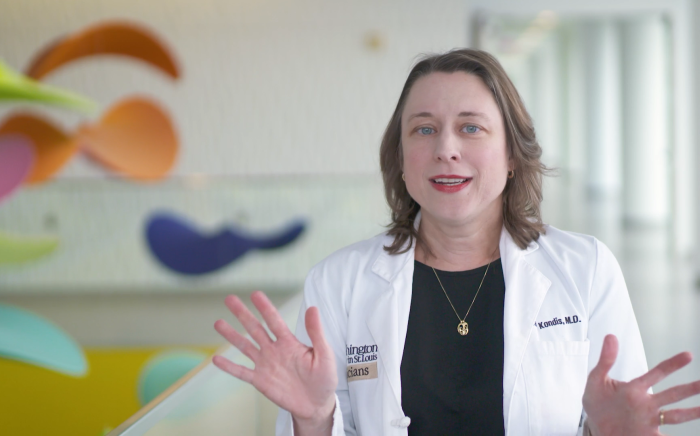Overview
A burn is damage to tissues of the body caused by contact with things such as heat, radiation, or chemicals. A first-degree burn affects only the outer layer of skin (epidermis).
Causes
The causes of a first-degree burn can include:
- Mild sunburn
- Very hot water
- Hot object, like a pot or pan
Symptoms
Symptoms can occur a bit differently in each child. Symptoms can include skin that is:
- Red
- Dry
- Peeling
- Painful for 48 to 72 hours and then feels better
The symptoms of a first-degree burn can be like other health conditions. Make sure your child sees his or her healthcare provider for a diagnosis.
Diagnosis
The healthcare provider will ask about your child’s symptoms and health history. He or she will give your child a physical exam. The diagnosis of a first-degree burn is based the signs and symptoms, and recent exposure to something that can cause a burn. This may be the sun, something hot, or a chemical.
Treatment
Treatment will depend on your child’s symptoms, age, and general health. It will also depend on how severe the condition is.
A first-degree burn usually heals on its own within a week. Treatment may include:
- A wet cloth soaked with cold water (cold compress) held to the skin, to ease pain
- Antibacterial cream, to help prevent infection
- Other creams, to lessen pain and swelling
- Over-the-counter medicine such as acetaminophen or ibuprofen for pain and swelling
- Any other treatment advised by your child’s healthcare provider
First-degree burns are usually not bandaged.
Complications
Long-term tissue damage is rare and may be an increase or decrease in the skin color. In some cases, the area may become infected.
Prevention
The following are some of ways to prevent burns in children:
- Keep your child out of the sun. Use sunscreen when your child is old enough, usually at 6 months.
- Make sure hot water is set below 120° F (48.8° C).
- Put covers on electrical outlets.
- Make sure pot and pan handles are turned toward the back of the stove.
- Be careful with hot drinks.
- Keep hot appliances in safe places. This includes toasters, irons, and hair-styling tools.
- Teach children never to play with matches and lighters and keep these items out of reach of children.
When to Call a Healthcare Provider
Call your child's healthcare provider if:
- Your child has a fever
- There is fluid leaking from the burn area
- There is increased swelling or redness of the burn area
Key Points
- First-degree burns affect only the outer layer of the skin.
- They may be caused by the sun, hot water, or hot objects.
- They are treated by applying cold, like running water or a cold cloth, at first. Creams or lotions may be applied.
Next Steps
Tips to help you get the most from a visit to your child’s healthcare provider:
- Know the reason for the visit and what you want to happen.
- Before your visit, write down questions you want answered.
- At the visit, write down the name of a new diagnosis, and any new medicines, treatments, or tests. Also write down any new instructions your provider gives you for your child.
- Know why a new medicine or treatment is prescribed and how it will help your child. Also know what the side effects are.
- Ask if your child’s condition can be treated in other ways.
- Know why a test or procedure is recommended and what the results could mean.
- Know what to expect if your child does not take the medicine or have the test or procedure.
- If your child has a follow-up appointment, write down the date, time, and purpose for that visit.
- Know how you can contact your child’s provider after office hours. This is important if your child becomes ill and you have questions or need advice.












